37 diagram the path of blood through the heart and body
Four Chambers of the Heart and Blood Circulation. The shape of the human heart is like an upside-down pear, weighing between 7-15 ounces, and is little larger than the size of the fist. It is located between the lungs, in the middle of the chest, behind and slightly to the left of the breast bone. The heart, one of the most significant organs ... RIGHT SIDE. (REMEMBER ANATOMICAL POSITION) LEFT SIDE. DEOXYGENATED BLOOD FROM BODY TISSUE. OXYGENATED BLOOD FROM LUNGS. VIA PULMONARY VEINS.1 page
Blood leaves the heart through the aortic valve, into the aorta and to the body. This pattern is repeated, causing blood to flow continuously to the heart, lungs and body. How does blood flow through your lungs? Once blood travels through the pulmonic valve, it enters your lungs. This is called the pulmonary circulation.

Diagram the path of blood through the heart and body
Arrows show the path of blood flow in the human heart. The blood enters the heart from the body through the superior vena cava and the inferior vena cava. Then the blood enters the right atrium chamber of the heart. The blood then moves through the tricuspid valve (shown as two white flaps) into the right ventricle chamber of the heart. Pathway of blood through the heart 1. Blood enters the right atrium from the superior and inferior venae cavae, and the coronary sinus. 2. From right atrium, it goes through the tricuspid valve to the right ventricle. 3. From the right ventricle, it goes through the pulmonary semilunar valves to the pulmonary trunk 4. Diagram: Trick to remember the function of the left side of the heart is to pump oxygenated blood to the rest of the body - Blood that has "LEFT" to the lungs. Blood Flow of the Heart Review Let's now use the 2x2 table we made in the anatomy of the heart post, and this will give us another way to visualize the blood flow through the heart.
Diagram the path of blood through the heart and body. As your heart beats, it pumps blood through a system of blood vessels called the circulatory system. Arteries carry oxygen-rich blood from your heart to the rest of your body. Veins return oxygen-poor blood to your heart. Follow these steps to make a chart about the path blood takes through your heart. 1.Cut out the heart diagrams. The flow of blood along arteries, arterioles, and capillaries is not constant, ... This diagram of the heart indicates the superior vena cava, aorta, ... Diagram the path of blood flow through the heart, lungs, and body of a fish and of a mammal or bird. This medical illustration depicts a diagram of blood flow through the body. Oxygenated (oxygen-rich)blood travels from the lungs to the heart, where it is then pumped throughout the body. Deoxygenated (oxygen-poor) blood travels from the body back to the heart, where it is pumped to the lungs for gas exchange. Labels include the common carotid arteries, jugular veins, superior vena cava ...
Pathway of Blood Through the Heart. In this educational lesson, we learn about the blood flow order through the human heart in 14 easy steps, from the superior and inferior vena cava to the atria and ventricles. Come also learn with us the heart's anatomy, including where deoxygenated and oxygenated blood flow, in the superior vena cava, inferior vena cava, atrium, ventricle, aorta ... Blood enters the heart through two large veins, the inferior and superior vena cava, emptying oxygen-poor blood from the body into the right atrium of the ...What does the heart look like... · Heart diagram parts, location... The human heart is connected with blood vessels coming from around the body. The blood is pumped into the blood vessels through the heart. This pumping of blood goes through a complex process, where in the deoxygenated blood or impure blood is cleansed and oxygenated blood or pure blood is sent throughout the body. A diagram shows a cross-section of a heart between two lungs. Red arrows show the path of oxygen-rich blood cells. Blue arrows show the path of oxygen-poor blood. Oxygen-rich blood cells travel to the heart from the lungs. The heart pumps enriched blood cells. They travel through the arteries to the body.
The flow of blood through the heart follows a very deliberate path to ensure that oxygenated blood from the lungs passes through major arteries and gets delivered to body tissues. This process occurs on an average of 70 to 75 times a minute, pumping about 2,000 gallons of blood every day. image via meritnation.com. image via anatomydiagram.info. Blood Flow Through the Heart. Beginning with the superior and inferior vena cavae and the coronary sinus, the flowchart below summarizes the flow of blood through the heart, including all arteries, veins, and valves that are passed along the way. 1. Superior and inferior vena cavae and the coronary sinus. 2. The path of blood through the heart begins with the right atrium receiving blood, which has circulated through most of the body. This blood is relatively low in oxygen because most of it has already been delivered to different organs and tissues. This blood is also relatively high in carbon dioxide, which is a product of metabolism in the tissues. Blood Flow Through the Heart. Blood flows through the heart in 12 easy steps. Always remember that it must flow through 6 areas on the right side and then 6 areas on the left side (this equals 12 steps). For better illustration, look at the picture below and note how the right and left side are separated.

6 2 1 Draw And Label A Diagram Of The Heart Showing The Four Chambers Associated Blood Vessels Valves And The Route Of The Blood Through The Heart Some Ppt Video Online Download
The Path of Blood through the Human Body. When a heart contracts and forces blood into the blood vessels, there is a certain path that the blood follows through the human body. The blood moves through pulmonary circulation and then continues on through systemic circulation. Pulmonary and systemic are the two circuits in the two-circuit system ...
Trace the blood flow through the heart, and learn the names of important parts of the sequence. Try to follow the pathway of blood shown in Figure 1.4. The Pathway of Blood to and from the Heart 1. Blood that has circulated through the body, which has lost its oxygen and collected carbon dioxide, enters through the vena cava into the
Path of Blood in the Heart - 100 Informal Points (50 of the points come from the color-coded blood flow, box diagram.) Introduction. At the time of her death, Anna's heart stopped beating. The body's pump was no longer able to propel oxygen-rich blood to her tissues and cells.

Draw The Pathway Of Blood Flow Through The Circulatory System Of A Mammal Label In Your Pathway Lungs Tissues Left And Right Ventricles Systemic And Pulmonary Circuits Left And Right Atria Tri
The left ventricle then pumps blood through the aortic valve and into the aorta, the artery that feeds the rest of the body through a system of blood vessels. Blood returns to the heart from the body via two large blood vessels called the superior vena cava and the inferior vena cava. This blood carries little oxygen, as it is returning from ...
Task Three - Diagram Assignment The student will create an original diagram of the heart and trace the pathway of the blood through the heart with appropriate labeling of 13 major points of anatomy; the oxygenated and deoxygenated blood flow through the heart will be clearly distinguished.
Diagram: Trick to remember the function of the left side of the heart is to pump oxygenated blood to the rest of the body - Blood that has "LEFT" to the lungs. Blood Flow of the Heart Review Let's now use the 2x2 table we made in the anatomy of the heart post, and this will give us another way to visualize the blood flow through the heart.
Pathway of blood through the heart 1. Blood enters the right atrium from the superior and inferior venae cavae, and the coronary sinus. 2. From right atrium, it goes through the tricuspid valve to the right ventricle. 3. From the right ventricle, it goes through the pulmonary semilunar valves to the pulmonary trunk 4.
Arrows show the path of blood flow in the human heart. The blood enters the heart from the body through the superior vena cava and the inferior vena cava. Then the blood enters the right atrium chamber of the heart. The blood then moves through the tricuspid valve (shown as two white flaps) into the right ventricle chamber of the heart.

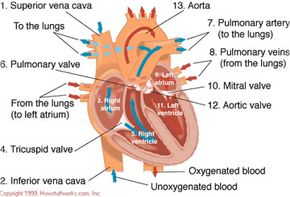


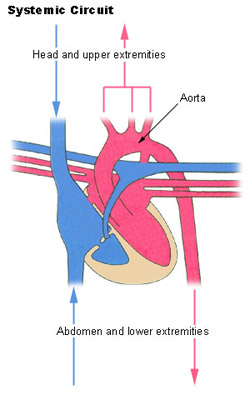




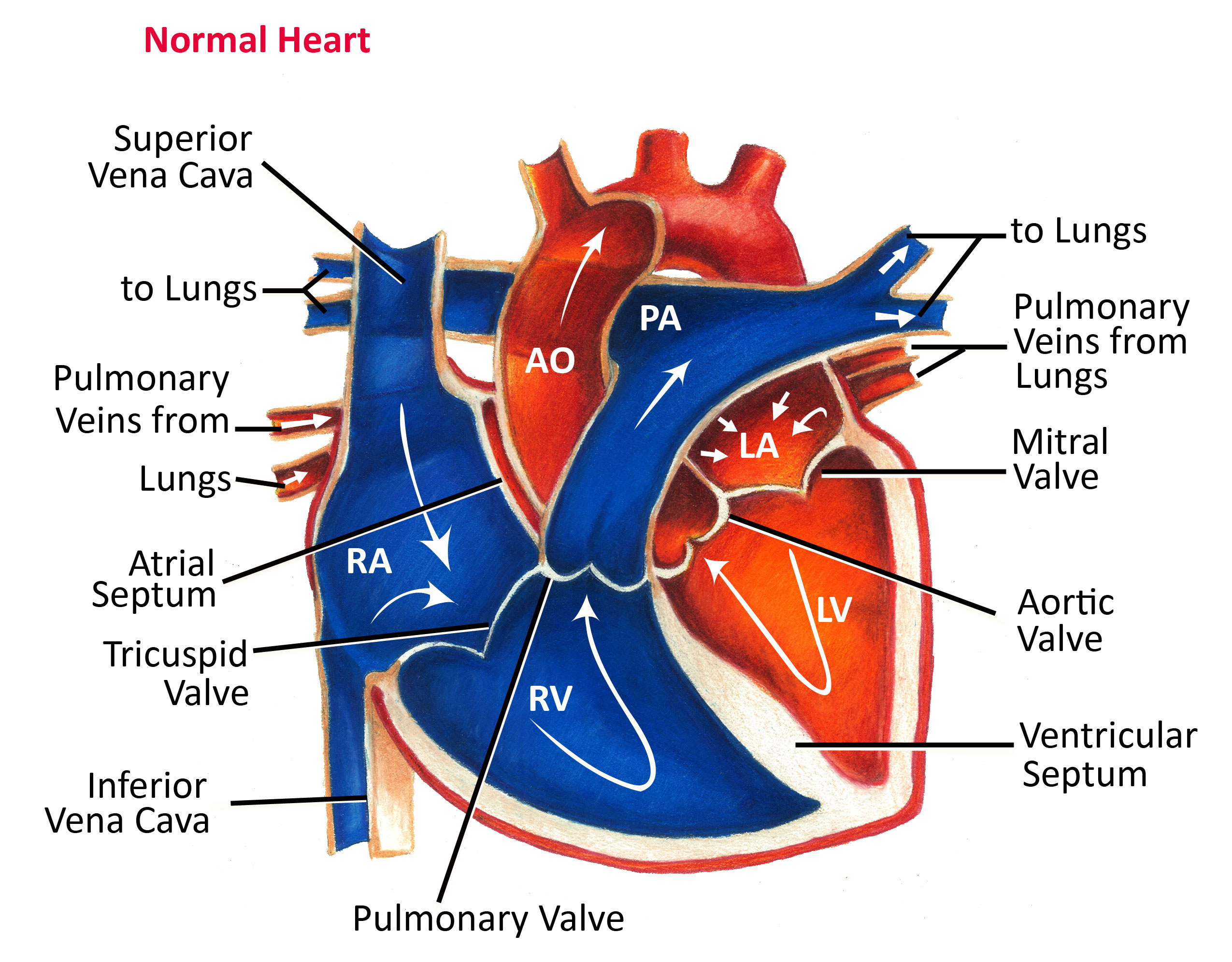

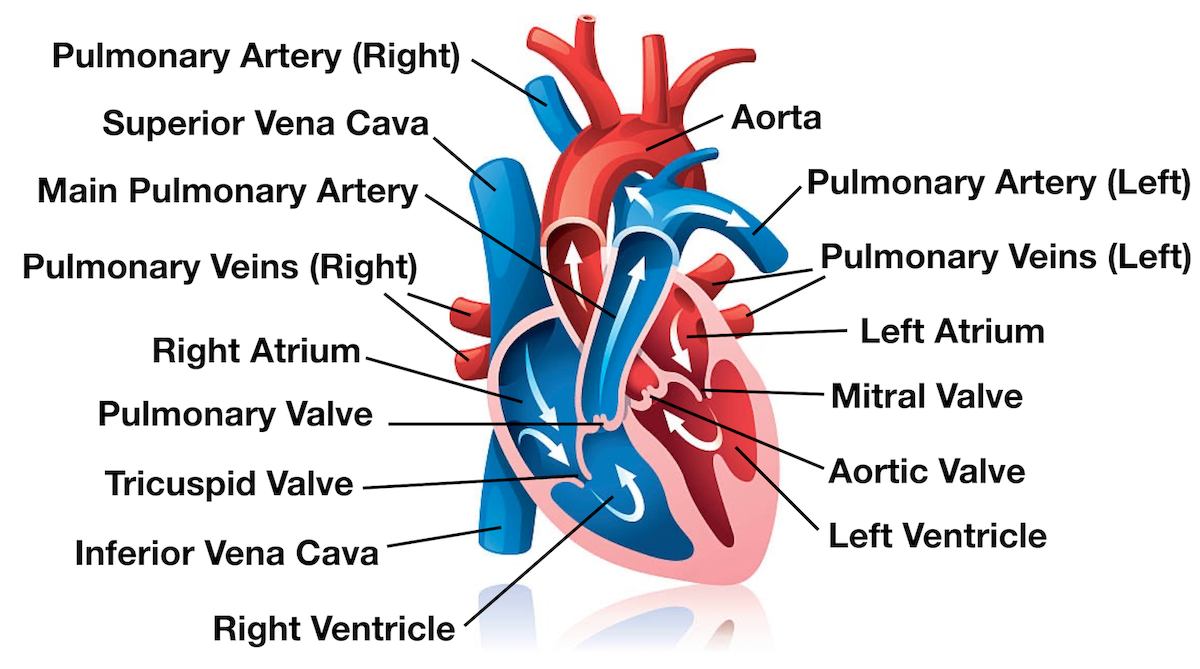

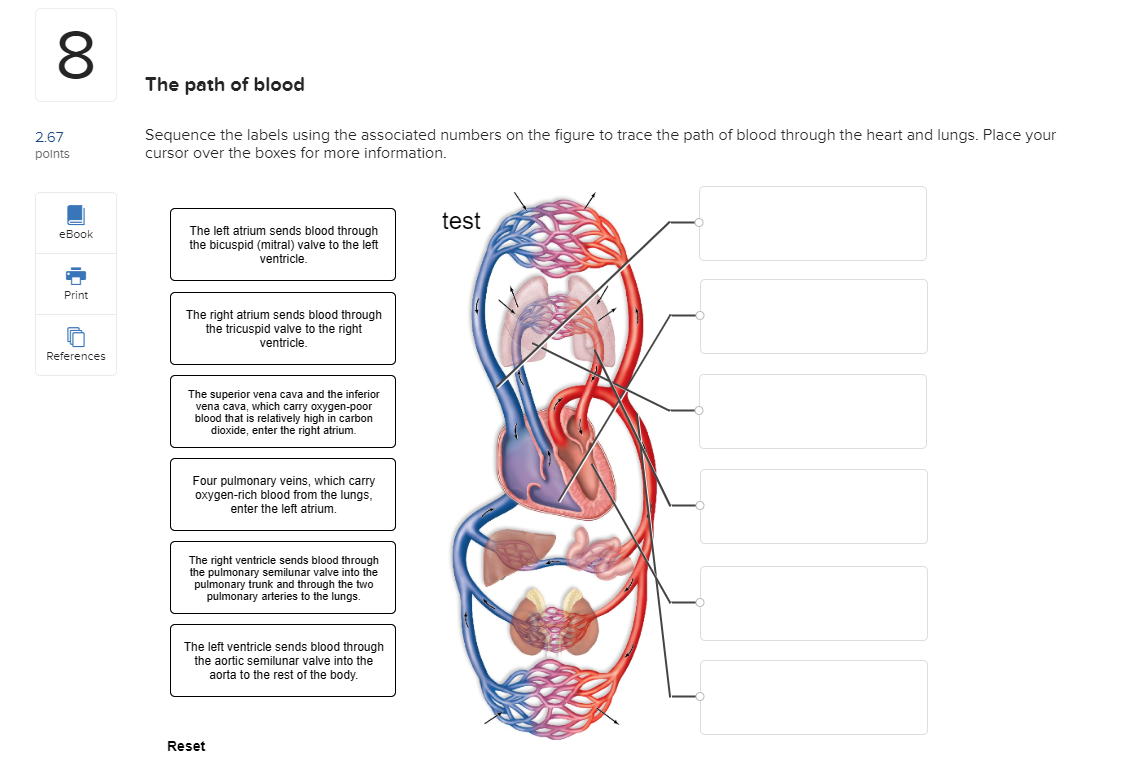

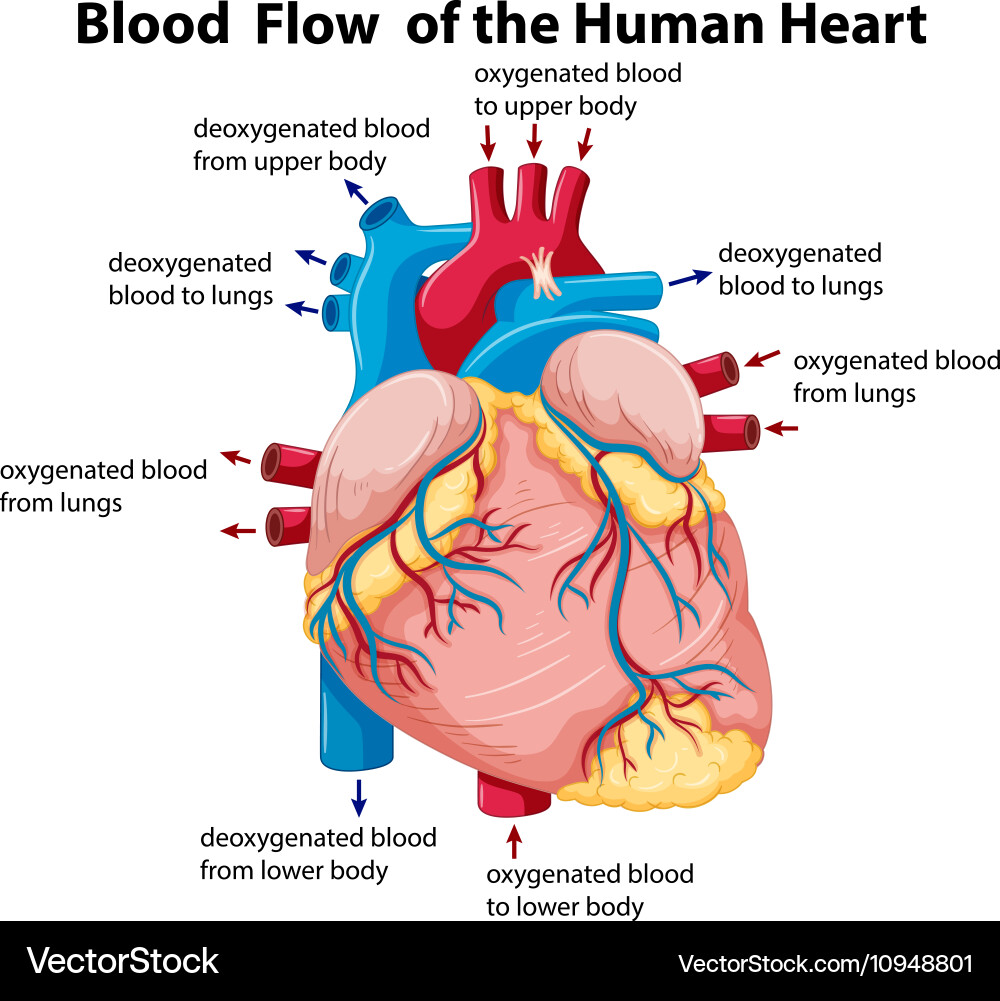
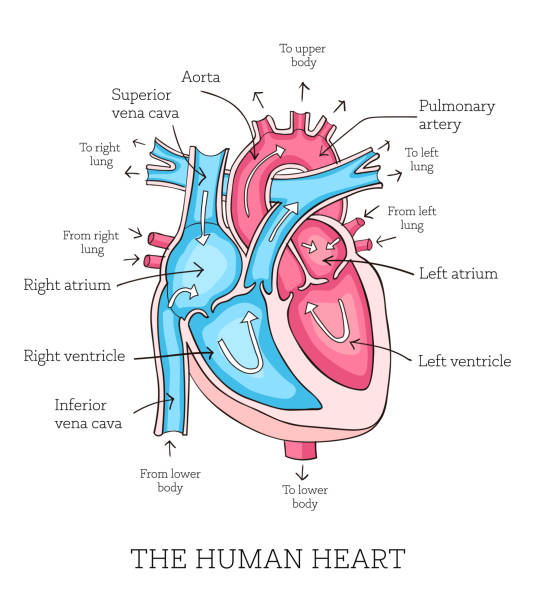

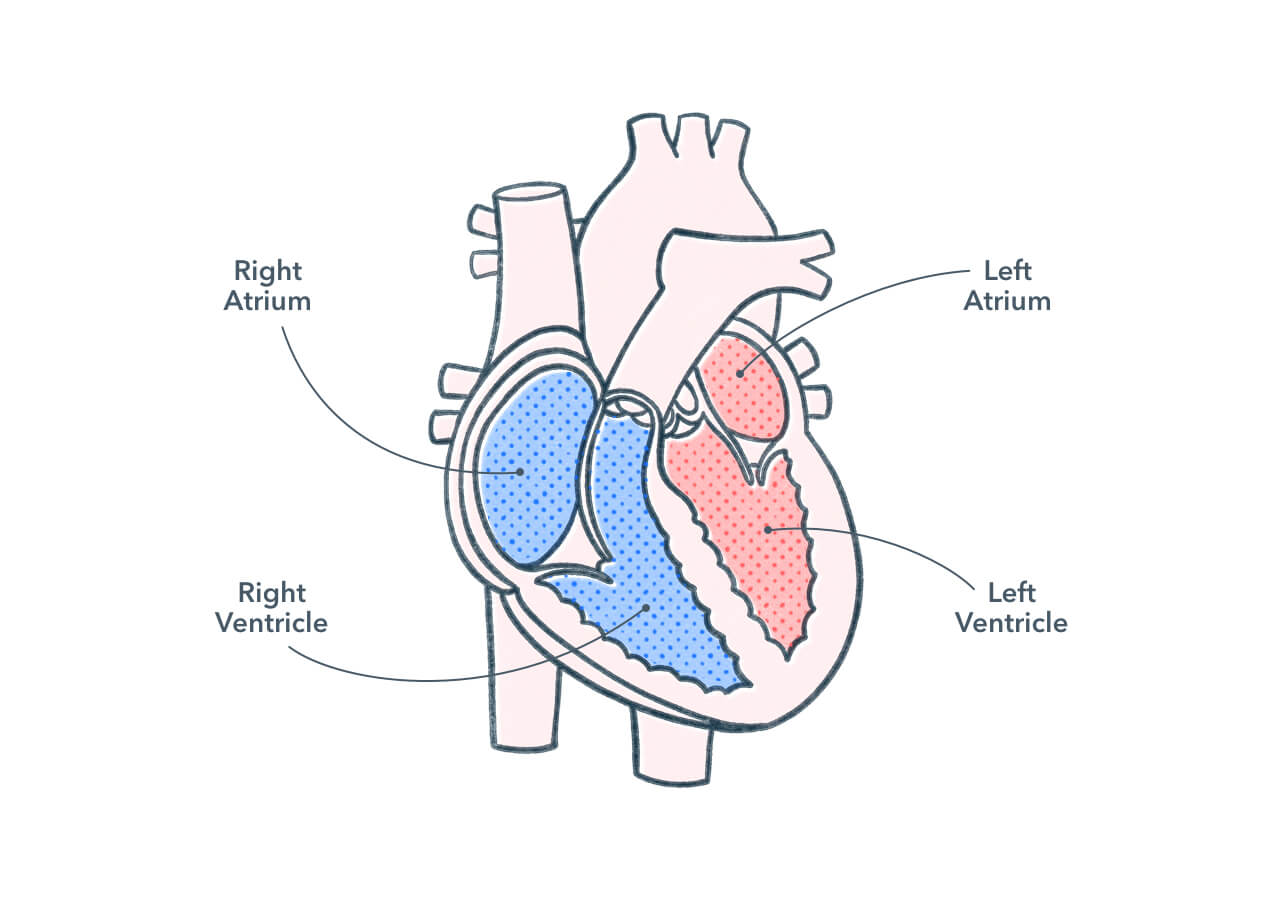

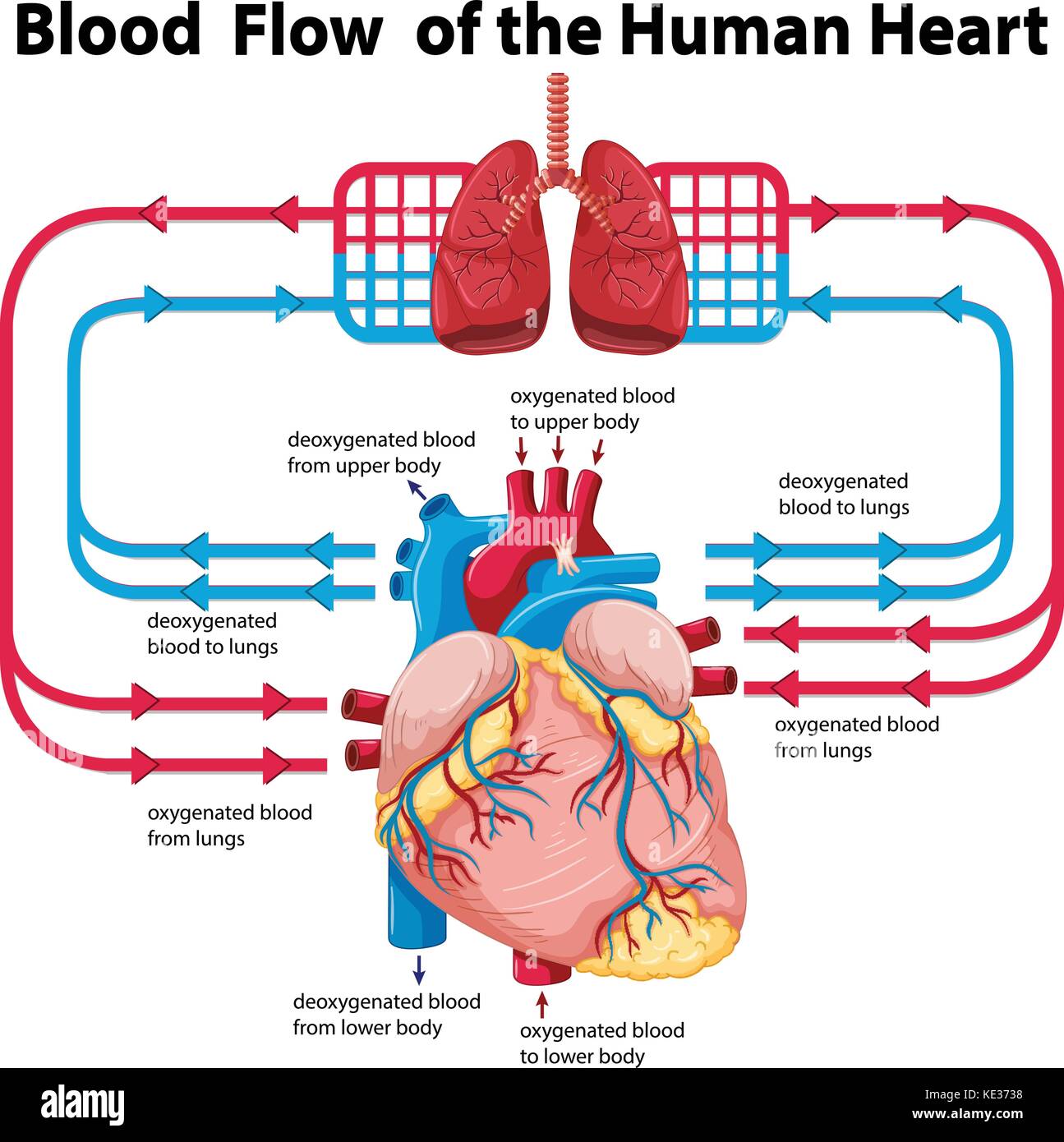
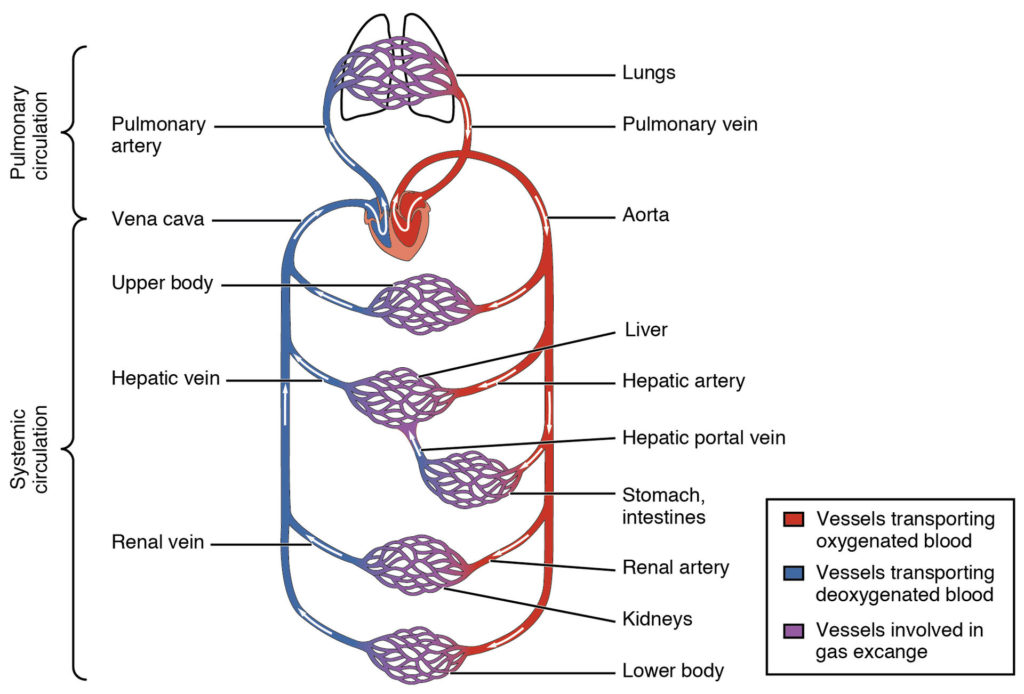


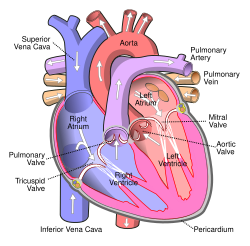




0 Response to "37 diagram the path of blood through the heart and body"
Post a Comment